Tony Davies Columns
This is the second part of an interview with John Hollerton, the first part in is the last issue! John recently retired from a long career at GSK and we took this opportunity to have a chat with him, as Mohan Cashyap and our beloved editor Ian Michael both have had the opportunity to work with John on projects and on the LISMS conference (Linking and Interpreting Spectra through Molecular Structures). Here, we move the discussion on to technologies and innovation, the great, the over-hyped and the effectively lost to the modern analytical laboratory.
Tony and Mohan Cashyap interview John Hollerton, who has just retired after a career of over 40 years at GSK (and its many previous names). John has been responsible for many aspects of analytical chemistry at GSK. As Tony says, he is “an innovative ideas man with some interesting stories”.
Tony Davies has started a timeline of significant spectroscopic system developments aligned with Queen Elizabeth’s reign as recently celebrated in her Platinum Jubilee. Jumping from Princess Anne the Princess Royal’s birth to Heinrich Kaiser certainly makes for a novel approach! Tony hopes that we can turn this into an online resource with your help.
This column starts to answer the question, “how does one actually find FAIR data?” with a detailed example from Imperial College London.
COLID is a Finding Aid, essentially a “catalogue of catalogues” collating any data source with which it is connected. It collects and provides metadata about basically any resource that you want to incorporate, links endpoints, such as spectra, in a repository or details in a chemicals database, and links it all semantically with any other related resource.
Tony Davies and Luc Patiny introduce us to free online NMR data processing tool in “NMRium browser-based nuclear magnetic resonance data processing”. They run through the background to the project, how it works and how you can try it yourself. There is a video introduction and an online demo page where you can play with different scenarios.
The Tony Davies Column offers a challenge to us all with another contribution on FAIR data, which should be Findable, Available, Interoperable and Readable. It is clearly the way we should all be going, everybody from manufacturers and software developers, through researchers to publishers needs to work together.
Whilst automation is not a panacea, it can improve the accuracy of manual tasks as well as freeing up our time for more challenging tasks. The authors explore some particular examples they have come across and lessons learned from them.
Tony Davies and Roy Goodacre raise some issues around the reliance just on vast quantities of data collection in omics experiments. As they put it, should we “just keep throwing the mass spectra, nuclear magnetic resonance data sets and our ion mobility fingerprints onto a big pile for the statisticians to fight over?”.
Tony Davies, Peter Lampen and Robert Lancashire are worried about their metadata, or perhaps the lack of it. With the explosion of data and ways to mine and make use of it, having accurate and appropriate metadata about analytical data sets is vital if they are to be reused efficiently or at all. This is also an area that is being increasingly targeted by regulators, with the US FDA issuing guidance at the end of 2018; others will follow. You have been warned.
FAIR, which stands for Findable, Accessible, Interoperable, Reusable, is an essential framework for the future of analytical data. Tony has taken the opportunity of a recent conference in Amsterdam to update readers on FAIR and how it affects spectroscopic data.
This column explores the initial results extracted from the survey in the last issue into the training the next generation of colleagues currently receives in analytical chemistry.
Tony Davies continues his quest to find out what you all need to work more efficiently. You will remember that in the last issue, Tony introduced his survey to discover what developments were needed in spectroscopy by readers. Some of the initial responses are explored, and Tony finds that he has opened a “can of worms”.
Tony Davies and a number of others consider collecting supplementary spectroscopic data. Like Eurospec, the plan is to use such supplementary data not only to enhance the published paper, but also to aid thorough peer-review by allowing reviewers access to the full data rather than, as Tony puts it, “low-resolution images of data”. I’m sure you will be interested in a look at the future through this column.
Developments in hardware, higher field instruments, better multinuclear probes including cryoprobe options, spectrometer control systems and also desktop NMR data processing software have all combined to make the measurement of inorganic nuclei a potentially commonplace and very helpful, often complementary, technique to other spectroscopic analytical tools.
Tony Davies and Steven Brown explore the solid-state nuclear magnetic resonance spectroscopy facilities at the University of Warwick, UK.
International standards need to keep pace with the innovation in analytical equipment and practices. For example, many of the advances in nuclear magnetic resonance (NMR) spectroscopy reported in this journal in recent years have yet to find themselves mirrored by updates in the respective Recommendations of the International Union of Pure and Applied Chemistry (IUPAC), nor in the many and varied proprietary recommended reporting formats of the different peer-reviewed primary scientific journals. Not that every innovation needs to be “standardised”: with the speed of many developments it is important to find the right balance between reacting to real movements in a field and enshrining a short-lived fad in a IUPAC Recommendation.
Tony Davies and Mohan Cashyap are concerned about your NMR data. When an article starts “On 10 October 2014 the impossible happened”, you will want to take note! Following the withdrawal of Agilent from the NMR business, Tony and Mohan consider three solutions to ensuring your NMR data is available now and into the future. If you have an NMR of any make, you will want to read this. Do remember that you can comment on the web version of the article.
Following on from the two recent articles on how the Cloud may be impacting the availability of scientific software delivery for spectroscopists, this article looks at what the wider commercial spectroscopy software providers have been doing in this area.
The Tony Davies column is a joint effort by Tony (A.N.) Davies, Mohan Cashyap, Bob Lancashire and Bob Hanson on “Exploring distributed, multi-server 1H NMR prediction”. This is the second part of the column’s investigation into the use of cloud-based services in the analytical arena. It describes a web page linking services from multiple sites on both sides of the Atlantic to deliver molecular structure drawing, 3D structure representation, name to structure conversion and display of data generated by linking chemical structures to 1H NMR prediction. May I reiterate Tony and Mohan’s plea for information on such cloud-based solutions, whether commercial or not. These can be sent to me ([email protected]) and I will pass them on.

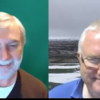
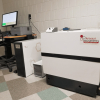

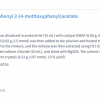

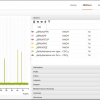
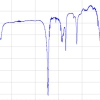
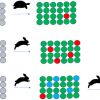





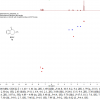
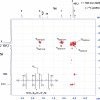
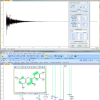
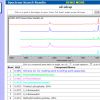
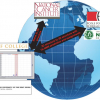

 The Tony Davies Column covers a wide range of topics of interest to spectroscopists in both industry and academe, with an emphasis on data handling and processing. Read more about the
The Tony Davies Column covers a wide range of topics of interest to spectroscopists in both industry and academe, with an emphasis on data handling and processing. Read more about the